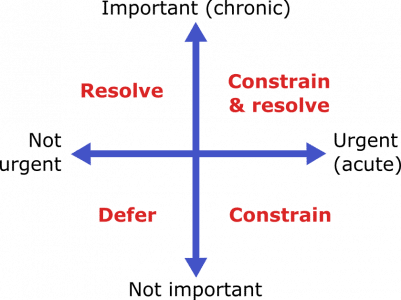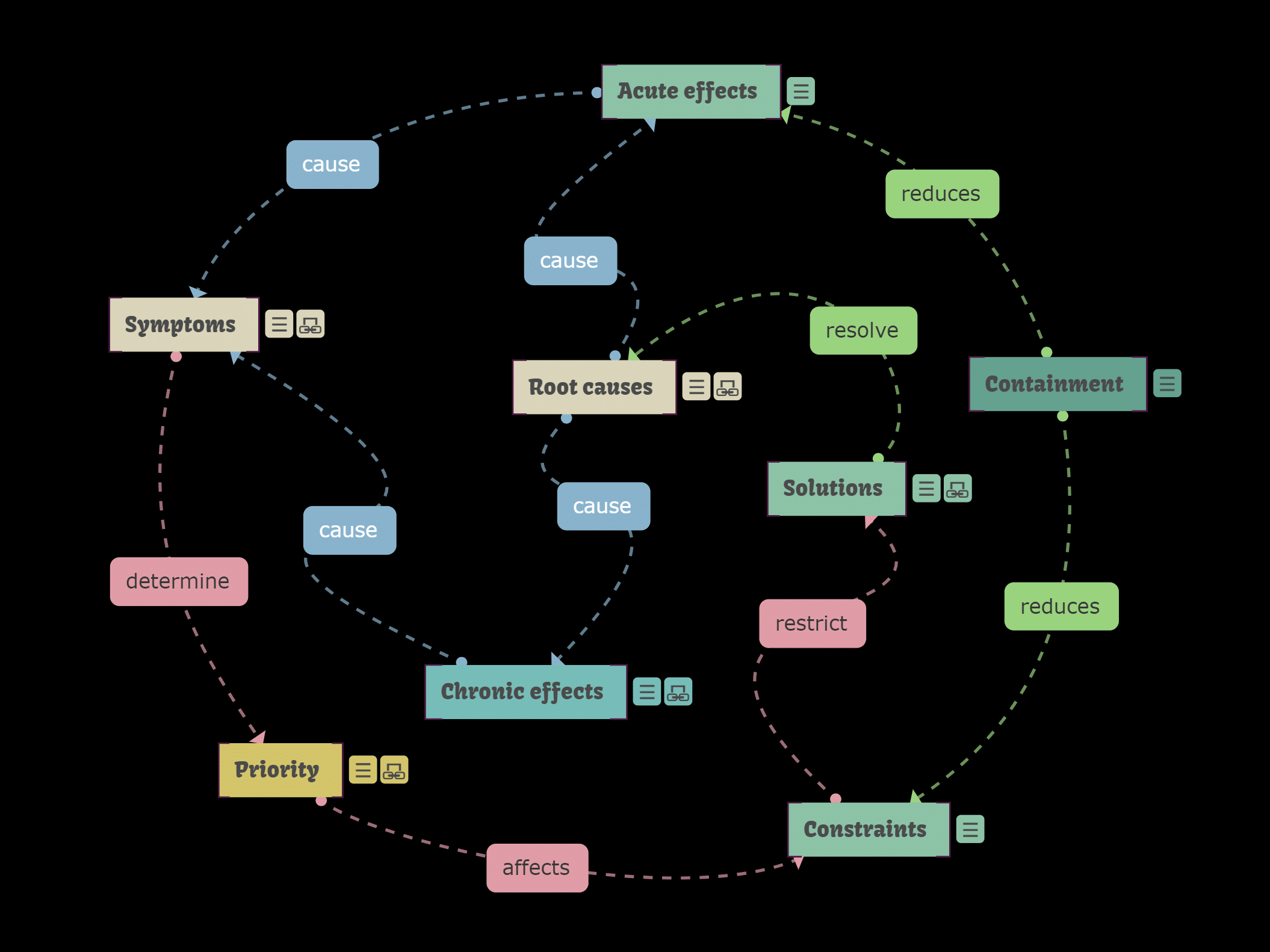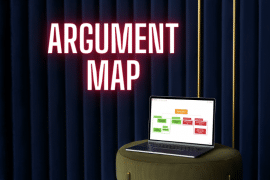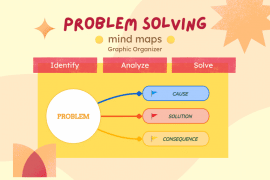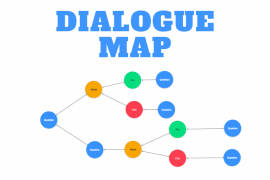When you are faced with a difficult problem, it can be hard to know where to start. There are so many things to think about, and not much time to act.
Collecting, organizing, and connecting information about a problem in a Mindomo map gives you space to think and communicate.
This article explains how the Mindomo template “Manage a problem” works. The template guides you from first encountering a difficult problem through to resolving it. It explains the difference between complicated and complex problems and shows how to use Mindomo to work with both. Use this template:
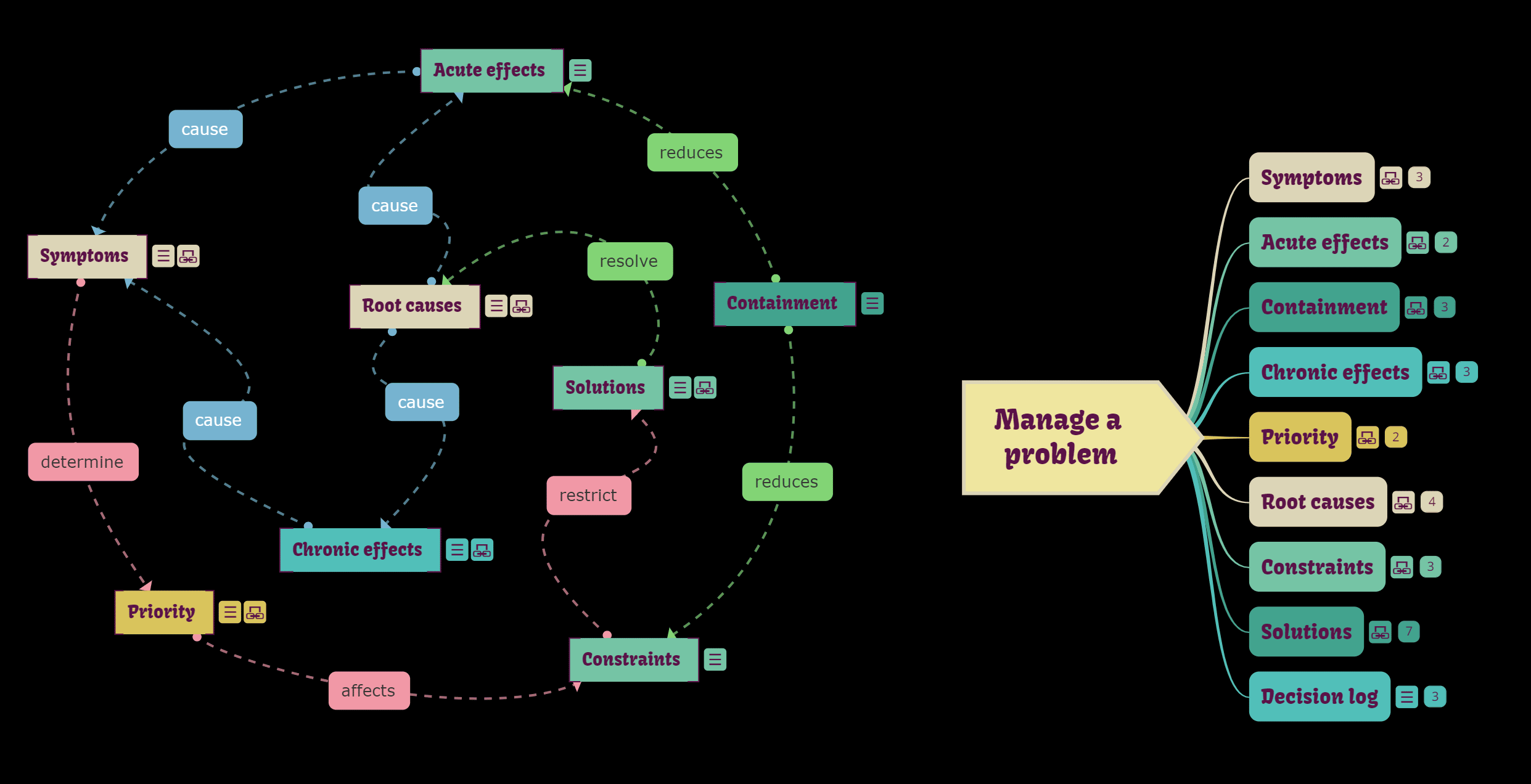
It assumes that you have some basic familiarity with Mindomo and can create mind maps, create Topics, insert Floating Topics, and connect them with Relationships.
Introduction
Visualizing the information around a problem helps you to understand it, communicate it and develop a plan to address it.
Problem-solving has been a popular topic in hundreds of books, methodologies, and academic papers for many decades. Everyone has their own special approach, but there is no universal answer that works in every situation.
Problems can be complicated or complex, requiring different approaches. Managing a problem often requires a compromise between the “problem” and its “solution”. Something that is a problem from one perspective might be desirable from a different viewpoint. Sometimes the “best” solution costs more than the problem. Sometimes a solution cannot be found, and you have to adapt to avoid it.
Bringing all of this together in a Mindomo map helps to ensure that you don’t miss out on some important factor or end up solving the wrong problem.
The elements of the template for managing a problem
The “Manage a Problem” mind map template gives you a set of Main Topics where you can start collecting information and ideas. When you select the Main Topic, template guidance also pops up with some hints.
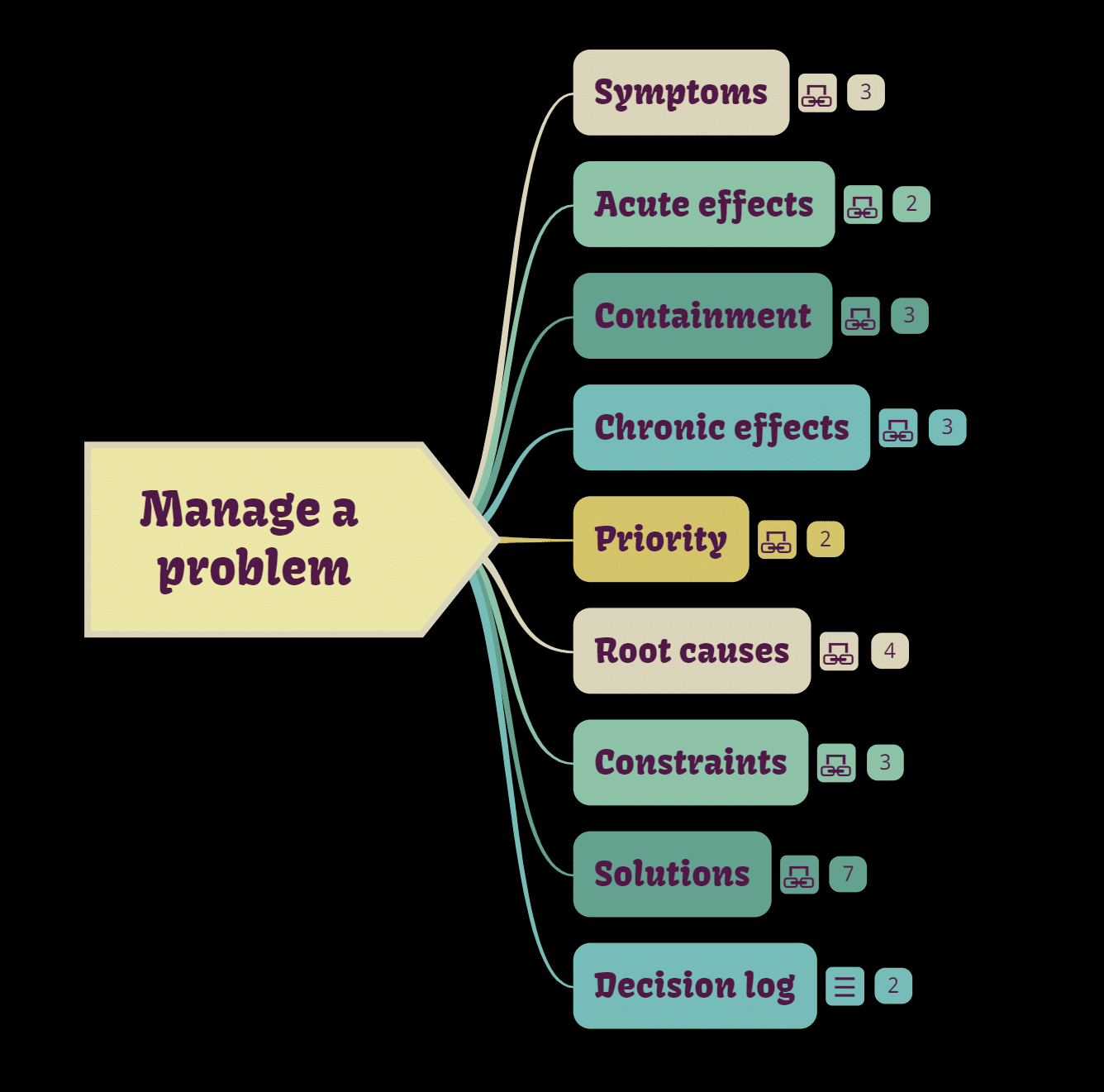
We will look at each element in turn in the following sections.
Symptoms
Symptoms are usually the first thing to be noticed. Sometimes they are dramatic and unmissable, and sometimes they are subtle and easy to ignore. They may be sudden, may have grown slowly, or may have been well known for a long time.
If you are trying to understand the root cause of a problem, then when you finally do understand it, all the symptoms will either be:
- Explained by the root cause
- Shown to be a coincidence
- Shown to be a misinterpretation
It is important to collect details of all the symptoms, whether they seem relevant or not. Try to avoid rushing to conclusions, even if you are short of time. Once you decide that you know where the problem comes from, you tend to interpret evidence in support of that, which can be misleading.
If there is a symptom that disproves your theory, don’t ignore it. Either it is a misinterpretation, or your theory is not yet correct.
Record all the symptoms as accurately as you can, even the ones that don’t seem to fit. In the long term, this will help you to devise ways of monitoring this situation arising again.
Acute effects
The acute effects of a problem are what cause pain right now and need fixing quickly. They may be indirectly causing other issues or maybe worsening as time goes on. Trying to address the acute effects is the first step. It is important to make a definitive list of them so that you can check them against solutions to make sure you have not missed anything.
The list of acute effects is usually bigger than the symptoms. Maybe only a couple of symptoms have been noticed, but there may be consequences that have not yet been observed.
Containment
Containment aims to manage the acute effects of a problem without trying to find the root cause. It might involve making rapid changes or finding a temporary workaround, and often has its own additional cost.
If things are happening fast, you won’t be here reading about what to do next. However, if the situation is less dynamic, you may have time to think about ways to prevent it from getting worse.
What you are looking for is a short-term or simple intervention that keeps things stable. This means understanding, if possible, what might be causing the issue to grow, even if you don’t yet understand what causes it. Steps to prevent things from escalating to a crisis or complete blockage give you time to think.
As a simple example, if a machine starts producing lengths of timber that are too long, then a temporary workaround would be to have someone cut each piece to size as it emerges. This might be better than shutting down the production line and taking the covers off the machine. This will take longer, and you might discover that the minor symptom reflects a serious underlying problem that will take a week to fix. You need to buy time to gather other evidence and plan a bigger response.
Chronic effects
The chronic effects of a problem are the results of leaving it unsolved over a long period. Identifying and listing the chronic effects will help you to correctly prioritize the resolution of the problem.
Problems can have unexpected consequences, some of which may take a long time to emerge. A relatively minor issue that is left unaddressed may build up over time until it becomes acute and can no longer be ignored. These chronic effects might seem to be too far away to worry about, but over time might be costing you more than it seems.
Don’t forget that one of the potential chronic effects of any problem is its capacity to happen again. Even if you cope with it this time, not addressing the underlying cause may mean that it happens again in a matter of days, weeks, or months. The potential cost of the problem may be many times the cost of an acute incident.
Priority
The priority of a problem is a combination of its urgency and importance. Priority determines the speed with which you respond, and the resources available to you.
We can use an adaptation of the Eisenhower Matrix to help prioritize problems and justify action.
In our modified version of the Eisenhower matrix, issues with acute effects can be considered urgent, while issues with chronic effects may still be important.
One of the lessons from the Eisenhower matrix and from prioritization techniques in general is: don’t neglect things that are important in the long term. An example of a priority scheme might be:
- Highest priority 1: problems that are both acute and chronic
- Priority 2: chronic problems with a high cost
- Priority 3: acute problems with noticeable costs
- Lowest priority: everything else
Many organizations are fully occupied by focusing on urgent (acute) issues, and never find the time to work on important (chronic) ones. If a problem has minor acute effects and is left unaddressed, the chronic effects may build up over time.
Root causes
Finding the root cause of an issue is the focus of most of the well-known problem-solving techniques.
To start with, it will help to gather as much information as possible. The next step is to develop models and theories of why it might be happening. For some issues, the cause will be obvious – perhaps too obvious to debate. Other issues may be more involved, with a variety of opinions, theories, and points of view about the “best” solution and the constraints on a solution. As you develop ideas about why the problem is occurring, you may be able to identify whether it is “complicated” or “complex”, which will help with your approach.
Complicated issues
If a problem is complicated, the root cause can often be found by logic and breaking things down until you can isolate the source. It is a question of scale, as there might be a lot of detail to examine. Several tools can help with this, including:
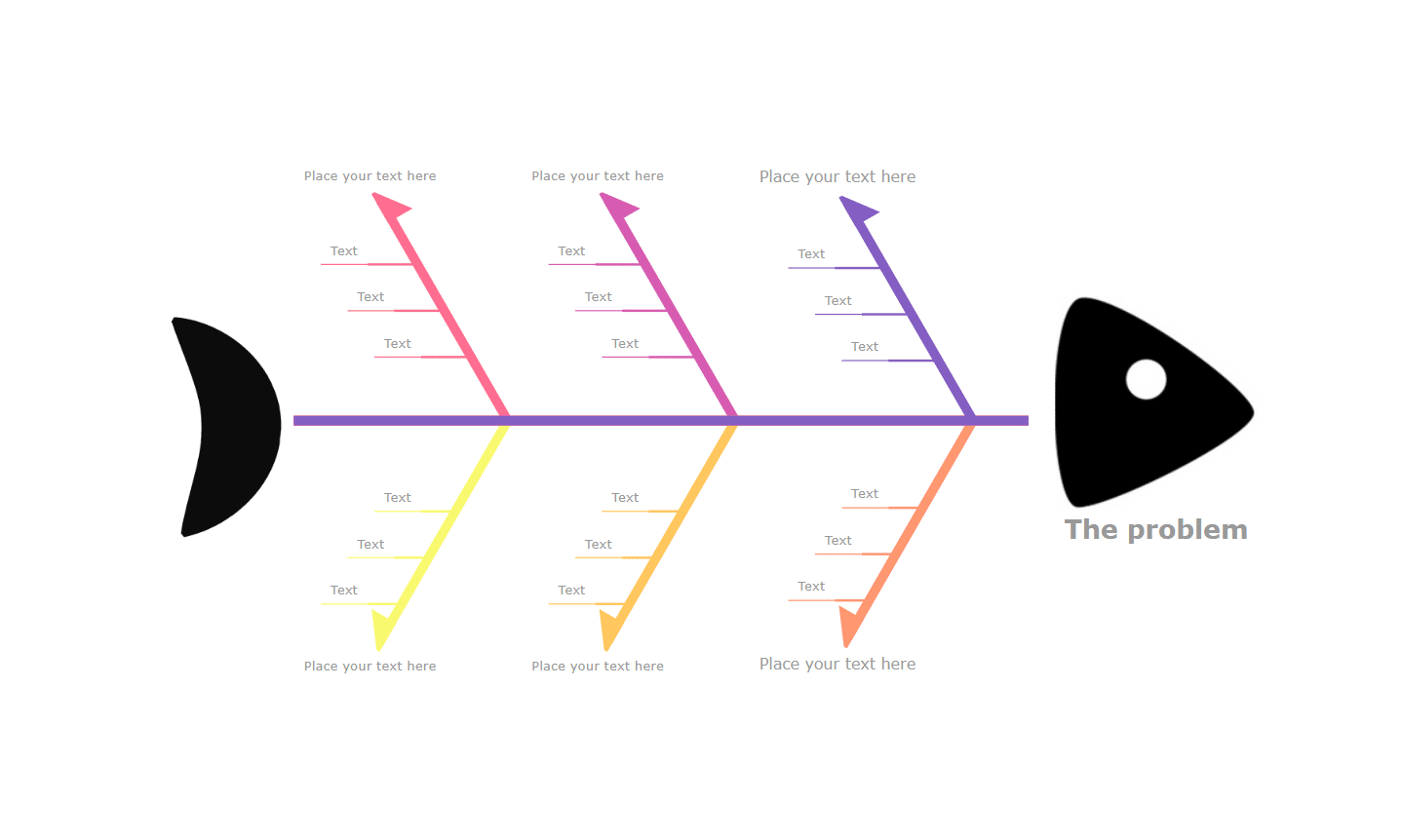
Mindomo is ideal for visualizing this kind of analysis because it can quickly draw trees of information. Use the Fishbone diagram template from the Templates Gallery.
Complex issues
Complex issues have multiple causes that interact with each other so there is no single chain of cause and effect that can be found by logical deduction. The resulting situation is a balance between interacting forces. In problematic situations, the balance point is too far away from an acceptable status, resulting in undesirable trends and outcomes. It may even be unstable, causing the situation to get worse.
The natural environment is a good example of a complex situation; there is no single cause of problems that can be separated out and resolved on its own. Changes can only be made by counteracting the forces that push the balance point in the wrong direction.
The “Manage a problem” template includes an example of a diagram that can model situations like this. In addition to topics to help you develop the description of the problem and solutions, it contains an influence diagram showing how the elements fit together and affect each other.
If we look at the influence diagram for managing a problem, we can see that to reduce acute effects, we can focus on containment. To reduce both acute and chronic effects, we need to address the root causes. To find solutions to the root causes, it helps if the constraints on solutions are reduced.
Be aware that if you are facing a chronic problem that has not been addressed, the above diagram will be in balance, but in the wrong place. Somewhere, the reason for not solving the problem will be keeping it in that position. The perceived priority may be too low because the acute effects are tolerated, people have adjusted to workarounds, or the constraints on solutions are too strong.
You can use Mindomo to draw an influence diagram with Floating Topics and connect the elements with Relationships to show how they affect each other. You can then try to minimize the influences that lead to negative positions and maximize the ones that lead to positive positions. Even if the overall behavior is too difficult to predict, you can try small adjustments and examine the symptoms to see if the balance is changing in the right direction. This is why clear identification of relevant symptoms is important.
Constraints
You are unlikely to have an unlimited budget, endless time, and complete freedom to come up with the perfect solution to a problem. All practical solutions must observe some constraints.
If sales are down this quarter, it would probably be unacceptable to fire the whole sales and marketing team and start again, so this solution would be outside the constraints and not considered.
How many times have you heard the phrase “You can’t do that because…”?
Sometimes good solutions get rejected too early due to minor objections, and the objection itself gets forgotten about later. You should identify applicable constraints and their importance, as this will save time when developing and evaluating potential solutions. Constraints can include:
- How much time you have before a temporary workaround is no longer acceptable
- A lack of consensus on priority
- The cost of the problem – Usually, solutions don’t cost more than the problem in the long term. To assess this, you will need to consider all the chronic effects
- The opportunity cost of working on this problem instead of something else
- What can realistically be controlled and changed
- Availability of knowledge, skills, and other resources
- The impact the solution will have in other areas and on other people
- Constraints on implementation, e.g., minimizing disruption
Solutions
Ideally, you will have a choice of solutions to evaluate.
A solution is a compromise between constraints and addressing the root cause. For complicated problems, where you can pinpoint the cause, the constraints may simply be time and cost. For complex problems, you may be looking for a balance between constraints and effectiveness. It might be sensible to make a small change with a controlled cost to find out whether bigger changes would work.
Doing nothing is always an option, and you should evaluate that alongside other solutions. Doing nothing may be totally unacceptable, but it will help if everyone agrees on the reasons that it is unacceptable.
For each solution option you need to know:
- How it addresses the root causes of the issue
- How it meets the constraints
- How you will measure the results
- What resources are needed, including cost
- How it can be implemented
Decision log
It will be helpful to keep a log of events and decisions on your map so that you can communicate them to others, and avoid accidentally reversing earlier decisions. You can be sure that whatever you decide, someone else will have a different point of view. If you have kept a log of who was involved and what decisions were made, you will be able to both justify the actions taken and learn from them for the next time.
Conclusions
Dealing with difficult problems needs imagination, clear communication, and reliable data.
A Mindomo map is a great tool to gather, organize, communicate, and debate ideas and data. This will free you up to focus on the root causes and effective solutions. Just starting to collect and organize data will help you to feel more positive about finding a good solution. Good luck!
Sign up for your free Mindomo trial here.
Keep it smart, simple, and creative!
Author: Nick Duffill

